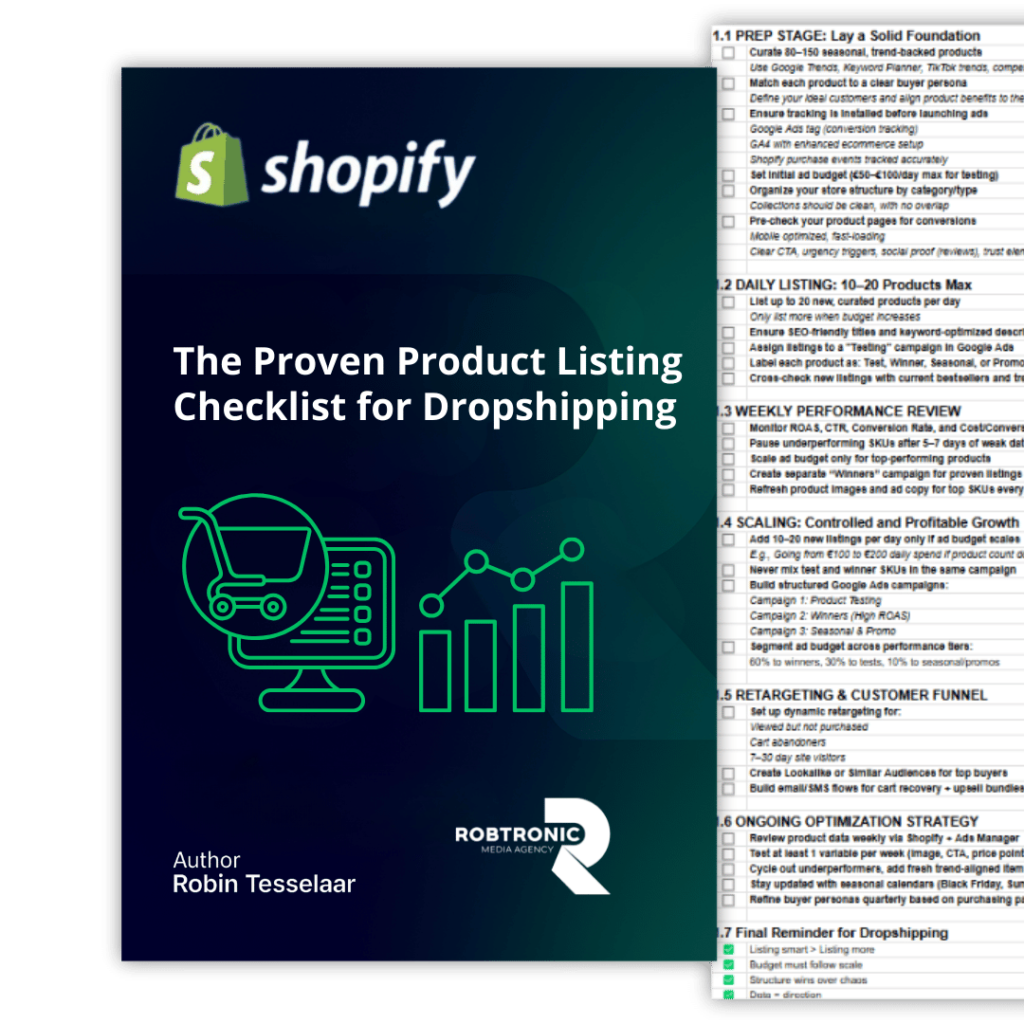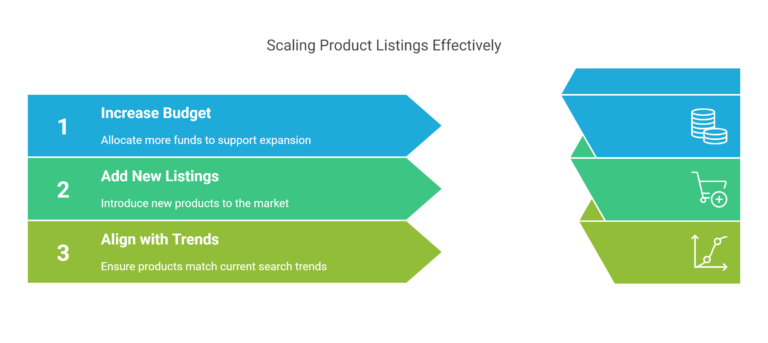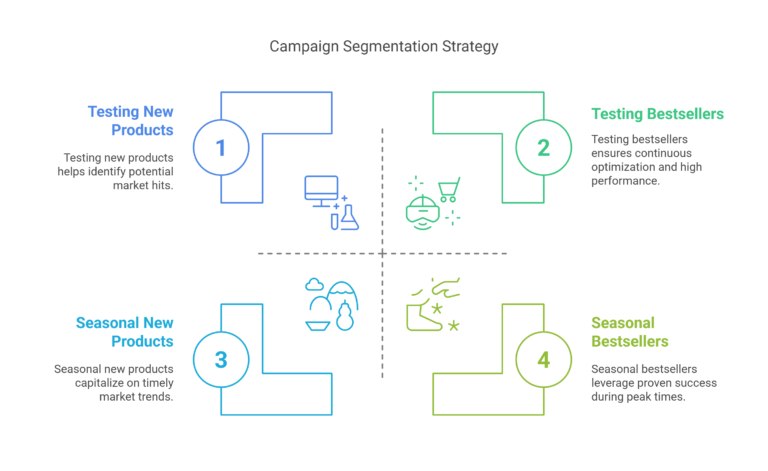In fast-paced e-commerce, timing and precision matter. They can turn a business into a success or a money pit. A key question many dropshippers often miss is: How many products should you list each day? Spoiler alert: more isn’t always better.
With Robtronic Media we run a successful Google Ads agency with over 50+ clients. For more information read our latest Case Study: How We Made £15K in 48 Hours with Google Ads (UK Fashion Brand). For us, this isn’t just theory; it’s a strategy backed by real-world experience. Listing the right number of products each day isn’t just about adding items to your store. It’s about giving Google’s algorithm the right data when it matters, with the right budget to support it.
This article explains the best daily product upload strategy. It shows how this affects ad performance. Quality is always more important than quantity.
1.1 Start Strong: Lay the Groundwork with the Right Product Base
Many new store owners rush to add hundreds—or even thousands—of products from day one. Robin suggests a smarter way to begin: start with around 100 carefully chosen products. This base helps Google Ads’ algorithm collect enough data for testing and analysis. It prevents the ad budget from being stretched too thin.
Pro Tip: Align your product list with seasonal trends and current search volume. This is key in fast-changing areas like fashion.
A report from Dropshipping.com says that starting with 80 to 150 products helps boost click-through rates early in ad campaigns. This article offers readers a step-by-step approach to launching their first Google Ads campaign, aligning with the strategy of starting with a curated product base. How to Launch Your First Google Ads Campaign for Dropshipping.
1.2 Don’t Just Add—Curate: Why Less Is More in Dropshipping
Google doesn’t care how many products are in a store—it cares about user experience and relevance. Flooding your store with irrelevant or low-converting products can hurt you.
Robin has seen countless merchants hit roadblocks by uploading too much, too soon. With a daily ad budget of €50–€100, spreading it across many SKUs limits exposure. This weakens the algorithm’s ability to collect useful data.
“Robin says it’s better to have 100 high-quality, seasonal products. Having 1,000 can confuse the algorithm and your customers.”
Pro Tip: Focus on relevant products and timing instead of uploading in bulk.
1.3 The Testing Phase: Precision Beats Volume
In the first 10 to 14 days of testing, Robin recommends allowing Google’s system to learn which products do well. Upload 10 to 20 key items each day. This approach keeps tracking tidy and budgets on point. Avoid overwhelming with a large catalog.
Expect a modest 1.5 ROAS during this stage as the system calibrates. Don’t panic—this is the foundation for long-term success.
Data from Dropship Breakthru shows that campaigns with a testing phase do 38% better in conversion efficiency than “bulk upload” stores.
Pro Tip: Archive weak performers in Shopify. Focus on those that show early signs of success.
1.4 Time to Scale: When and How to Expand Listings
Once winning products are identified, it’s time to add more—but only if the budget grows too. Robin suggests raising the daily budget when new listings come in. For instance, going from 100 to 200 products should be accompanied by a boost from €100 to €200+ in ad spend.
Pro Tip: Add 10–20 new products per day, max—especially if they align with existing bestsellers and seasonal search trends.
Pro Tip 2: This article provides advanced strategies for scaling Google Ads effectively, complementing the discussion on budget adjustments during scaling; The Fastest Way to Scale Google Ads in 2025 While Staying Profitable.
“Scaling only works if your spend supports it. Otherwise, you’re just stretching the algorithm too thin,” Robin says.



